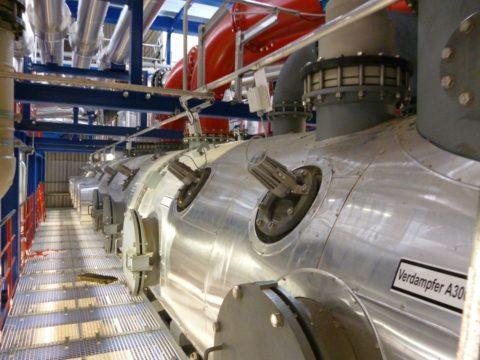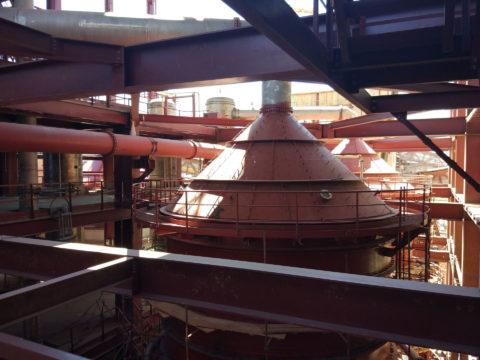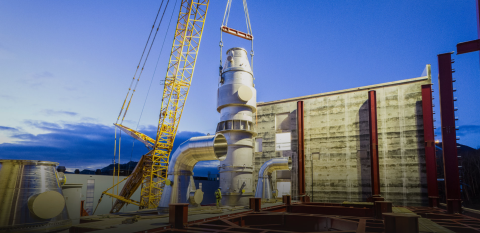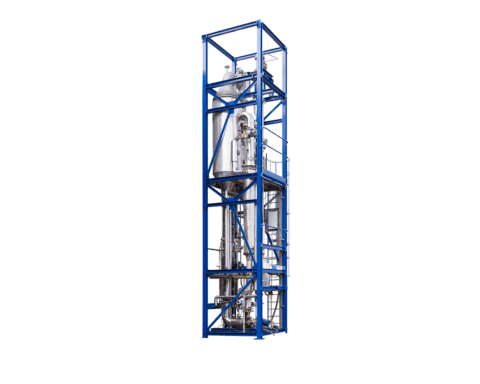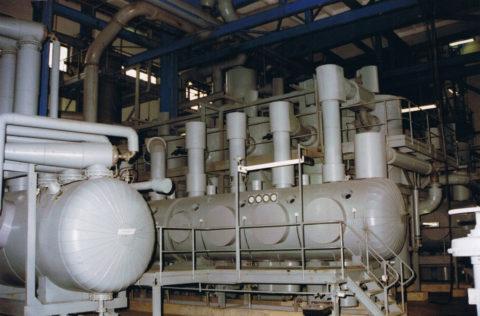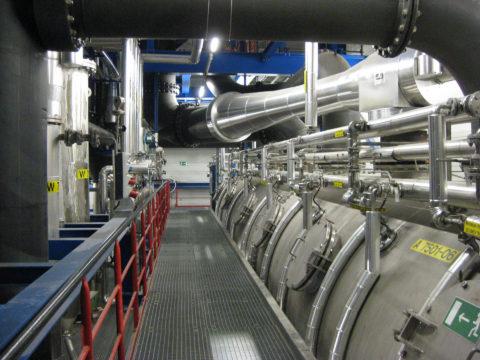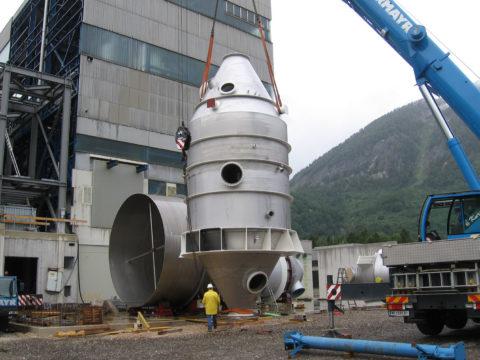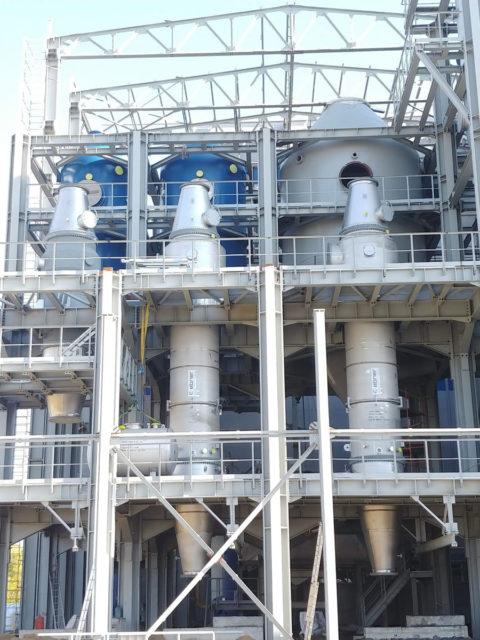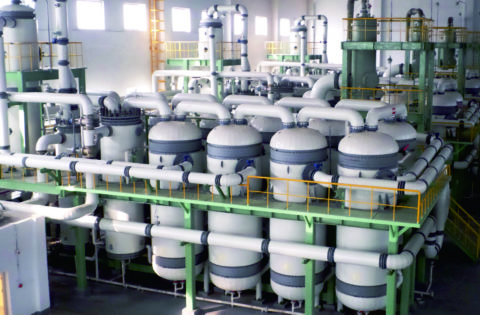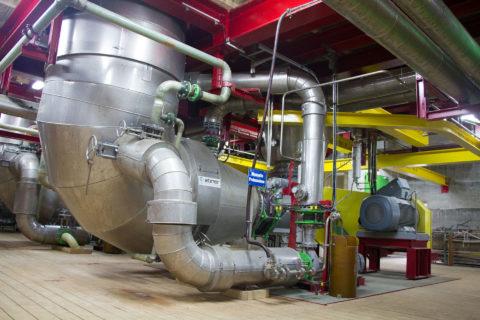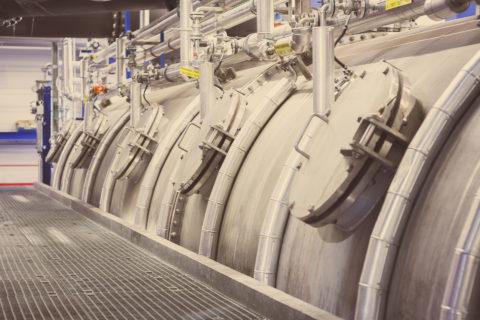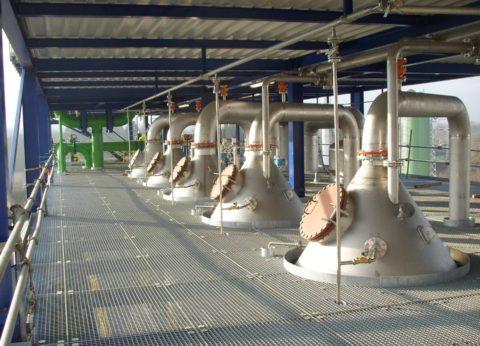
Crystallization of K₂SO₄ (SOP)
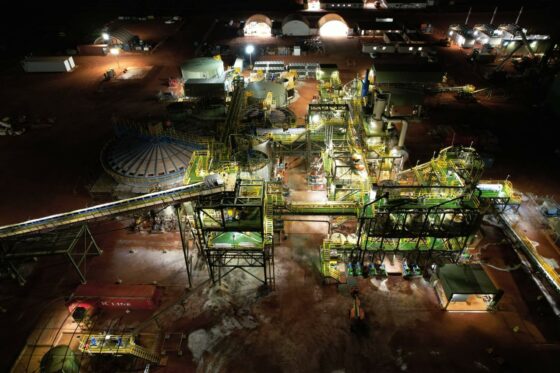
Due to the continuously growing world population, the demand for fertilizers has steadily increased in recent years, and the production of high-quality fertilizers like potassium sulfate continues to rise.
In the past, potassium sulfate production plants were primarily operated using the highly energy-intensive Mannheim furnace process. This involved the reaction of KCl and H₂SO₄ to produce K₂SO₄ and HCl as products.
Nowadays, due to the demand for energy-efficient processes, production methods have changed. Crystallization plants for SOP (Sulfate of Potash), as it is called in the fertilizer industry, are now carried out through the conversion processes of existing salt solutions.
In this process, an intermediate product is always generated from the starting solution, which is then converted into the corresponding product salt, potassium sulfate in fertilizer quality, through evaporation and crystallization.
The starting materials are suitable solutions with the necessary content of potassium as well as sulfate ions from process wastewaters or appropriate raw salts such as KTMS (Kainit Type Mixed Salt).
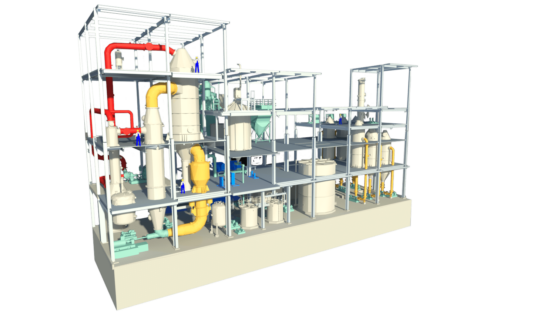
Processing via the Intermediate Product Schoenite

In this method, the starting salts potassium chloride (KCl) and magnesium sulfate (MgSO₄) are usually converted into schoenite (K₂Mg(SO₄)₂ 6H₂O) in a conversion process and crystallized in vacuum cooling crystallization plants.
The crystalline schoenite is then converted into potassium sulfate (SOP) and separated in the next step.
Thus, the overall process requires several separation facilities as well as, depending on the exact process method, evaporation plants for the concentration of MgCl₂ solution.
If the starting salt does not consist of pure raw salts as shown, but contains other by-salts such as sodium chloride (NaCl), these are obtained in additional steps from the plant either as a by-product or as another product through crystallization plants.
Processing via the Intermediate Product Glaserite
Another way to produce potassium sulfate (K₂SO₄) as SOP (Sulfate of Potash) in fertilizer quality is the process via the intermediate step of producing glaserite (K₃Na(SO₄)₂).
Here, the two raw salts are converted into solid glaserite in a conversion process. This glaserite is then transformed again into K₂SO₄ in a further step, which, after salt separation and drying, is available as finished SOP in fertilizer quality.
The overall process includes hot evaporation crystallization for treating the mother liquors produced in the process, which produces NaCl (vacuum salt) in table salt quality as a finished product. Furthermore, a vacuum cooling crystallization plant is necessary to ensure necessary return flows into the conversion processes from the overall solution.

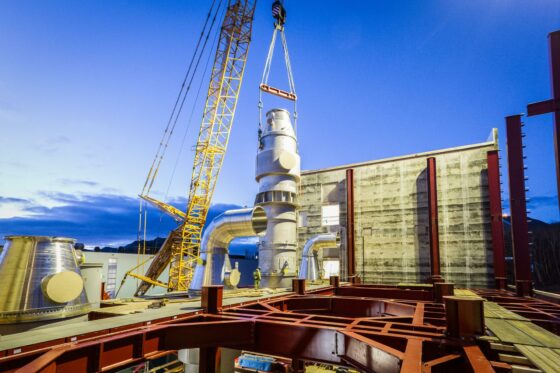
EBNER – your competent partner in plant engineering
With many years of experience in various industries and with different solutions, EBNER is your contact for optimally executing the process design, planning, delivery, and erection according to your needs.
Frequently Asked Questions
How is it determined whether schoenite or glaserite is produced as an intermediate product in the crystallization of potassium sulfate as SOP?
The raw material or solution used as a starting medium determines the process and thus the conversion step and its intermediate product.
If the starting material is rich in magnesium ions, the crystallization plant for potassium sulfate or the overall process will proceed via the intermediate product schoenite (K₂Mg(SO₄)₂ 6H₂O).
If, on the other hand, the raw material is enriched with sodium ions, the crystallization plant will be implemented via the intermediate glaserite (K3Na(SO₄)₂).
In any case, a vacuum cooling crystallization plant is used in the crystallization of potassium sulfate (SOP).
What can be used as a starting material for the production of potassium sulfate?
Salts with a high content of necessary ions (K ions, SO₄ ions), such as KTMS, can be used.
Solutions, such as purge solutions from saltworks with high contents of Na ions and SO₄ ions, are also suitable for further processing and crystallization of potassium sulfate.
Why is the Mannheim furnace process no longer used?
Due to the high costs of the components used for the process, the high energy costs due to high process temperatures, and susceptibility to repairs, the method of conversion and vacuum cooling crystallization is almost exclusively used today.
Other Applications

